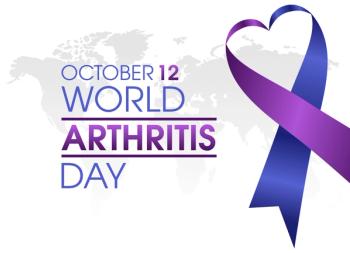
Vaping Risks: Known and Unknown
Although vapes have not been around long enough to yield long-term safety data, known risks associated with their ingredients and reported lung injuries suggest the dangers of this habit.
Electronic cigarettes (also called e-cigarettes or vapes) were introduced in the US in the mid-2000s and grew increasingly popular with the advent of flavored products, such as Juul in 2015. Prior to these entering the market, vape usage in youths was below 5%; however, these rates jumped to nearly 21% by 2018. While these products have been marketed as tools to quit smoking, youth and young adults—the most common users—largely do not take up e-cigarette habits for this reason.1
Vaping may be considered less damaging to one’s health than smoking tobacco, but the use of vapes and e-cigarettes can still be dangerous. Due to the relatively short time frame of their popularity, there is not tons of robust safety data on these products; however, over the years, the impact of vaping has become increasingly connected to various lung injuries and other complications. To spread awareness about the risks and available data on the e-cigarette and vape usage, this article will provide an overview of what clinicians and researchers have learned about the effects of vaping on lung health.
What Are We Inhaling?
Vape pens are battery-powered devices heat the “e-liquid” into an inhalable aerosol consisting of a multitude of chemicals. Nicotine remains present in many vape products, which means that vaping still carries a risk of addiction much like traditional cigarettes. Listed here are a plethora of other toxic chemicals or metals that have been identified in common and flavored e-cigarettes2:
- Benzene:
a volatile organic compound used in may paints, varnishes, pesticides, air freshener, disinfectant and cleaning products, pesticides, deodorants, fuel sources, car exhaust and more - Acrolein: often used in weed killer; known to have detrimental and irreversible impacts on one’s lungs
- Propylene glycol: artificial smoke in fog machines, antifreeze, and paint solvents feature this product, which is also a common additive in various foods
- Diethylene glycol: also used in antifreeze products; its toxic qualities have linked this chemical to lung disease
- Cadmium: this metal is toxic and present in traditional cigarettes, with known associations to respiratory disease and breathing complications
- Other heavy metals such as lead, tin, and nickel; the inhalation of ultrafine particles can bring them deep into one’s lungs
- Diacetyl: a chemical that has been connected to bronchiolitis obliterans (BO), also referred to as “
popcorn lung ” - Carcinogens: cancer-causing chemicals that are present in traditional cigarettes as well as concoctions such as formaldehyde and ethanal
These materials and their concentrations vary between products because the FDA has yet to issue any standards for e-cigarettes or conduct an official review of their components.
Potential Risks
Popcorn Lung
Popcorn lung, or BO, refers to a rare condition of the respiratory tract that effects the smallest airways in the lungs. Either resulting from infection or the inhalation of toxic chemicals, these airways become damaged, inflamed, and even scar. Multiple of the aforementioned chemical additives to e-juice have been linked to popcorn lung.3
Symptoms may not develop initially; however, skin rash, night sweats, tiredness, fever, wheezing, and coughing or shortness of breath before or after exercise are all signs that someone could be affected by this condition.
At present, no cure is available for popcorn lung. Affected individuals will require lifelong care to manage their symptoms and treatment responses can vary. Furthermore, this condition will not heal on its own and can be fatal without treatment.
It is important to begin treatment as soon as possible and to stop vaping upon diagnosis.4 Prednisone and other corticosteroids can help manage symptoms by easing inflammation. Patients may also benefit from inhalers or inhaled forms of medication such as albuterol to both dilate one’s bronchial tubes to reduce shortness of breath or wheezing. In more severe or extreme cases, steroids, oxygen, or even lung transplantation will be recommended.
Collapsed Lung
A collapsed lung, also known as a primary spontaneous pneumothorax, results from a hole in the lung that allows oxygen to escape. This event can happen if someone sustains a knife- or gun-related injury but also if air blisters rupture on the lungs. Air blisters are not alarming, according to
Shortness of breath, difficulty breathing, and/or sharper chest or shoulder pain can be indicative of this event. A collapsed lung may heal on its own after rest and treatment with oxygen; however, severe cases necessitate a chest tube to drain leaking oxygen away from the body and may require surgery to fix the hole directly.
“At Johns Hopkins, we’re seeing a rash of collapsed lungs in younger people... We always ask if they’ve been smoking, and they’ll often say, ‘No, I don’t smoke. But I do vape.’ Now we tell patients not to smoke or vape if they want to avoid another lung collapse and surgery in the future,” noted Stephen Broderick, MD, a lung cancer surgeon at Johns Hopkins,
Lung Cancer
There are still not enough data to make conclusions about the association between vaping and lung cancer, although the ingredients of e-liquid have known associations. A report published in
Other research suggests that individuals who vape also go on to develop similar cancer-associated molecular changes that are typically seen in cigarette smokers, mainly observable in oral tissue.7
Despite lacking data to suggest that vaping leads to lung cancer, it is important to note that vaping is not free of risk. Much like traditional cigarettes, the surest way to steer clear of the potential consequences is to limit exposure to e-cigarette vapor when possible or quit vaping altogether.
References
1. Fadus MC, Smith TT, Squeglia LM. The rise of e-cigarettes, pod mod devices, and JUUL among youth: factors influencing use, health implications, and downstream effects. Drug Alcohol Depend. 2019;201:85-93. doi:10.1016/j.drugalcdep
2. What’s in an e-cigarette? American Lung Association. September 9, 2024. Accessed November 5, 2024.
3. Popcorn lung (bronchiolitis obliterans). Cleveland Clinic. March 16, 2022. Accessed November 5, 2024.
4. Bronchiolitis obliterans symptoms, diagnosis and treatment. American Lung Association. Updated October 29, 2024. Accessed November 5, 2024.
5. What does vaping do to your lungs? Johns Hopkins Medicine. Accessed November 5, 2024.
6. Tang MS, Tang YL. Can electronic-cigarette vaping cause cancer? J Cancer Biol. 2021;2(3):68-70. doi:10.46439/cancerbiology
7. E-cigarette users show cancer-linked genetic changes. Tobacco-Related Disease Research Program. Accessed November 5, 2024.
Newsletter
Stay ahead of policy, cost, and value—subscribe to AJMC for expert insights at the intersection of clinical care and health economics.

















































